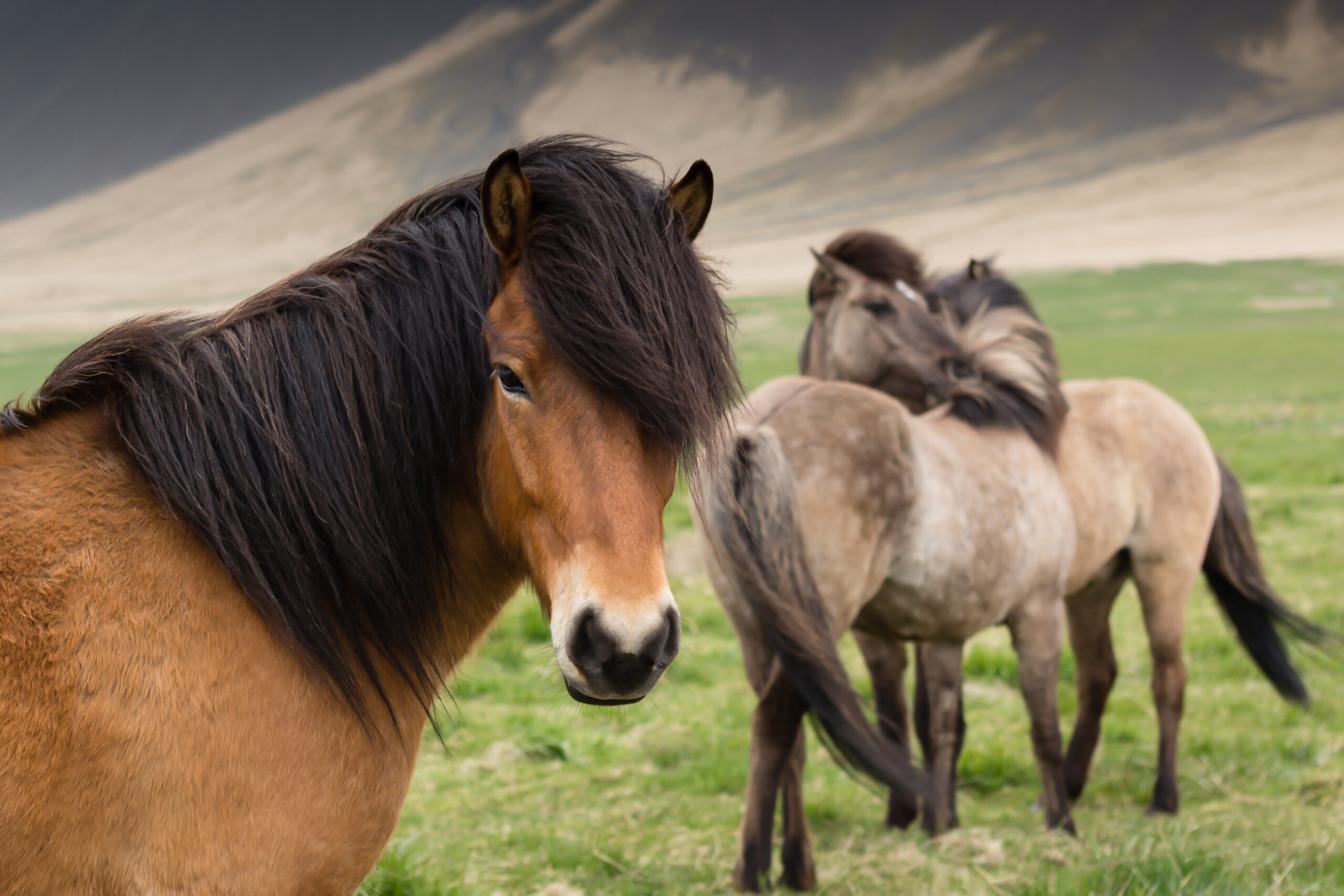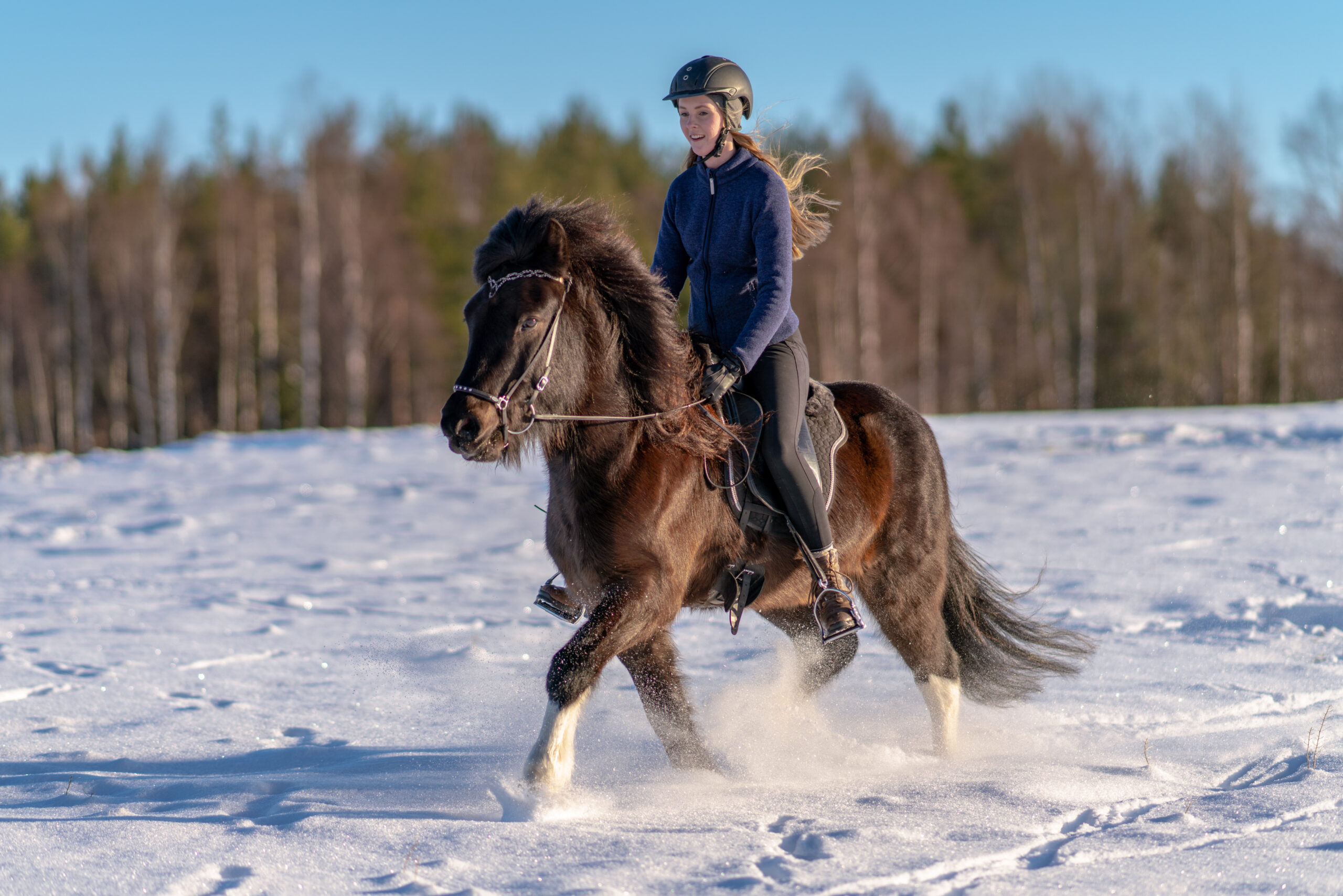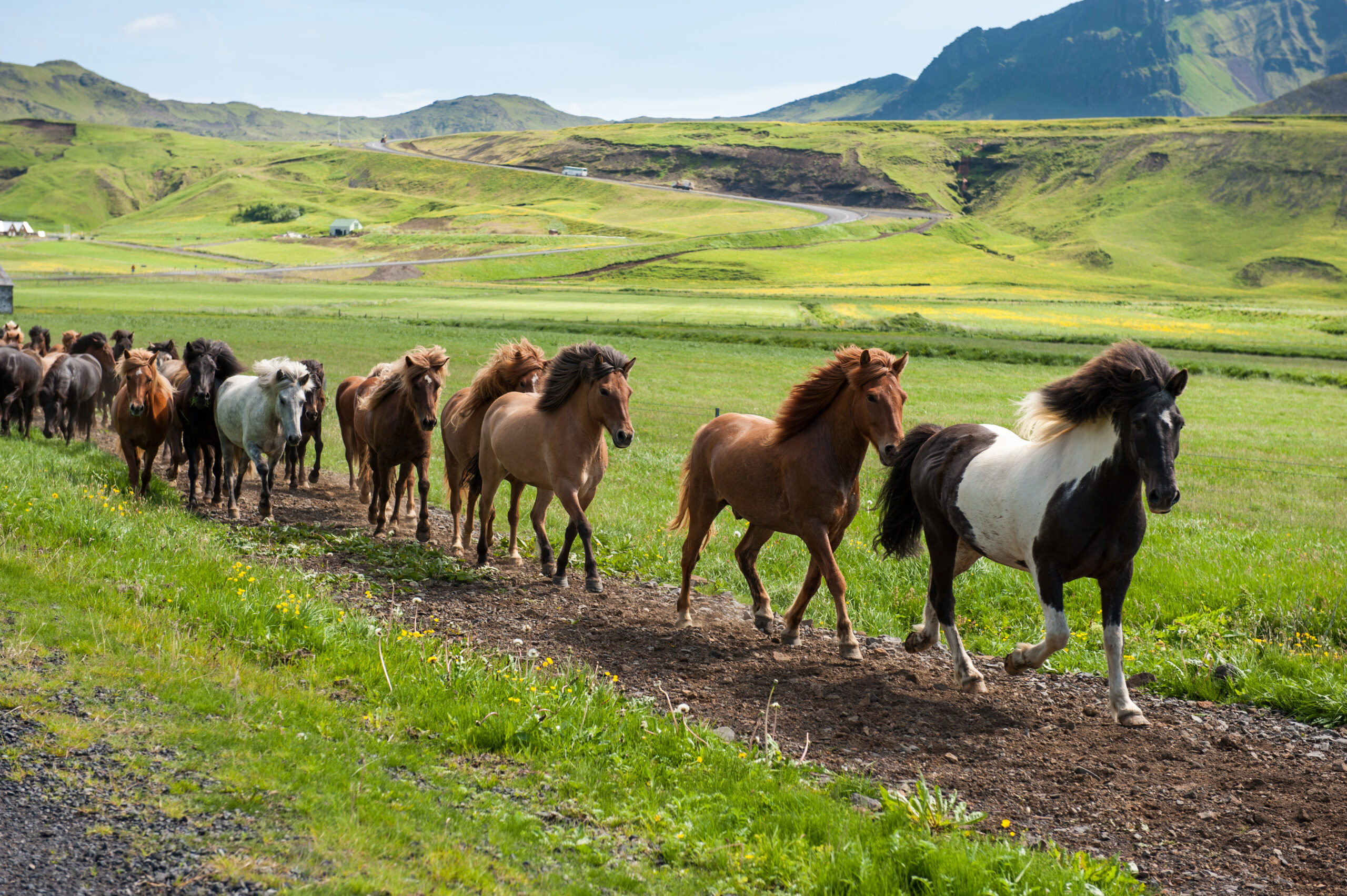The hardy horses of Iceland have graced the island for over a thousand years. The gaits of the Icelandic Horse enable it to move across Iceland’s rough terrain at magical speeds. Living in isolation in this location created unique qualities in the Icelandic Horse. Increasingly, riders across the world appreciate its hardiness and smooth paces. It has an enchanting history, too.
History and Origins
Iceland was first settled in the ninth century. The incomers were mostly Norwegian and came from areas of Norse settlement in Scotland, Ireland, and the islands, as well as Norway itself. They brought with them the small hardy horses that were already thriving in these places. Experts argue that the Norse settlers chose smaller animals as they would be easier to ship across the turbulent sea to Iceland.
However, at that time, most types of horses were small. Nevertheless, they were fast and strong enough to carry an adult rider and even a warrior in armor. Living semi-feral lives in the harsh landscape of Iceland, the horses developed the toughness and resilience that make them famous today. They were an important part of the cultural life of the island, and not only for their practical use as riding, pack, and small draft animals.
Since the horses have been there since pagan times, their stories became entwined with the sagas the people told. They were given names that echoed those of the heroes and gods of the tales. One of the stories told of the great god Odin and his eight-legged steed Sleipnir. This fabled animal enabled the god to fly above the ground at a miraculous pace. Watching modern-day Icelandics moving so fast that their legs are a blur, it’s not hard to imagine where this idea came from!
Icelandics at Work and Play
As well as being the main transport in Iceland for centuries, the horses were used competitively, mainly for racing. For a long time, organized stallion fights were also part of the island’s history. The practice was banned in the late sixteenth century, but it continued for some years afterward. The arrival of Christianity brought new ideas and behavior, but the people never lost their love of the old sagas and their horses.
Importing horses into the island was banned by the parliament, known as the Althing, in very early times. This has ensured that the phenotype has remained consistent through the centuries. It has also provided an effective 1000-year biosecurity barrier that keeps the horses healthy. Also, in order to maintain the quality and health of the Icelandic Horse, any horses that leave the island for export are not allowed back in. Given their great qualities as riding horses, it is not surprising that Iceland has always had an active export trade in horses. In the nineteenth and twentieth centuries, many Icelandic Horses were sold to mines, particularly in Britain, and the small horses spent their lives working underground.
In the latter part of the twentieth century, Icelanders recognized the importance of the horses as part of Iceland’s heritage. They became a reason for the popularity of Iceland as a tourist destination. Trekking holidays are still the best way to see some of Iceland’s remote volcanic landscape. Icelandic horses, along with Peruvian Pasos, were also used to create the gaited German Aegidienberg horse breed.
What is special about Icelandic Horses?
The wonderful gaits of the Icelandics make them very special. Their other characteristics are important too: soundness, willingness, and general all-round good health.
Icelandic Horses – Conformation
Icelandic horses stand on average between 13 hands (52 inches/132 cm) and 14 hands (56 inches/ 142 cm) high. They weigh between (730 lb/330 kg) and 840 lb/380 kg). They are always called horses, or íslenski hesturinn in Icelandic. The term pony first occurs in British contexts in the seventeenth century, and so the term horse was previously widely used for small equines prior to this.

Icelandic horses stand on average between 13 hands (52 inches/132 cm) and 14 hands (56 inches/ 142 cm) high.
They are handsome horses, with straight-profiled heads. They have long backs with muscular, somewhat sloping croups. Long, muscular shoulders allow the great length of stride for their gaits. Their chests are broad. The mane and tail are full and have developed as part of their capacity to survive in cold weather. Winter coats grow thick and dense. The Icelandic has a veritable rainbow of coat colors. As well as many chestnut, bay, black, and gray individuals, there are also roans, pintos, duns, and palominos.
Video of Icelandic horses
Gaits
The Icelandic’s wonderful gaits are some of the qualities that make this horse very special. Most have the familar gaits, walk (fetgangur), trot (brokk) and canter or gallop (stökk). Many horses have two additional gaits, making them five-gaited horses. The Icelandic tölt is a four-beat lateral gait. Both legs on each side move forward almost simultaneously, but each foot hits the ground separately. This ambling movement is very comfortable for the rider. The flying pace (skeið, or flugskeið) is a two-beat lateral gait. The legs on each side move forward together and hit the ground together. It is this gait that gives the closest feeling to riding a flying horse! The horses can reach a speed of 30 mph (48 kph). The quality of these two special gaits adds a great deal of value to the horses that have them.

The Icelandic’s wonderful gaits are some of the qualities that make this horse very special.
How much does an Icelandic Horse cost?
Due to relatively low numbers of Icelandic Horses in the USA, buyers can expect to pay around $10,000..
Characteristics of the Icelandic Horse
Hardiness, endurance, and willingness are the principal qualities of Icelandic Horses. Now that they are increasingly becoming family horses, their willingness and kindness are an important part of their appeal. Icelandics are sociable animals and much prefer being kept in a small herd with other Icelandic Horses. For their size, they are exceptionally strong horses and have been ridden by men, women, and children for centuries. They are long-lived horses. It is not unusual for them to reach 40 years of age, and even 50, it’s rumored!

Hardiness, endurance, and willingness are the principal qualities of Icelandic Horses.
Breeding and Uses
Strict standards now apply for judging the quality of Icelandics globally. These are monitored by individual breed associations in 22 countries. The International Federation of Icelandic Horse Associations (FEIF) is the umbrella organization. In the USA, the registry is maintained by the United States Icelandic Horse Congress. Assessment of quality is based on conformation (40%) and rideability (60%).
Icelandic horses are exceptional riding horses and very well suited to distance riding. There are now many show classes for Icelandics, and they do very well in classes that test agility and nimbleness. They are a popular choice in the tournaments that take place in continental Europe. In Iceland, they are still working horses, used especially for rounding up sheep, and also as packhorses.
What is special about Icelandic Horses?
The wonderful gaits of the Icelandics make them very special. Their other characteristics are important too: soundness, willingness, and general all-round good health.
